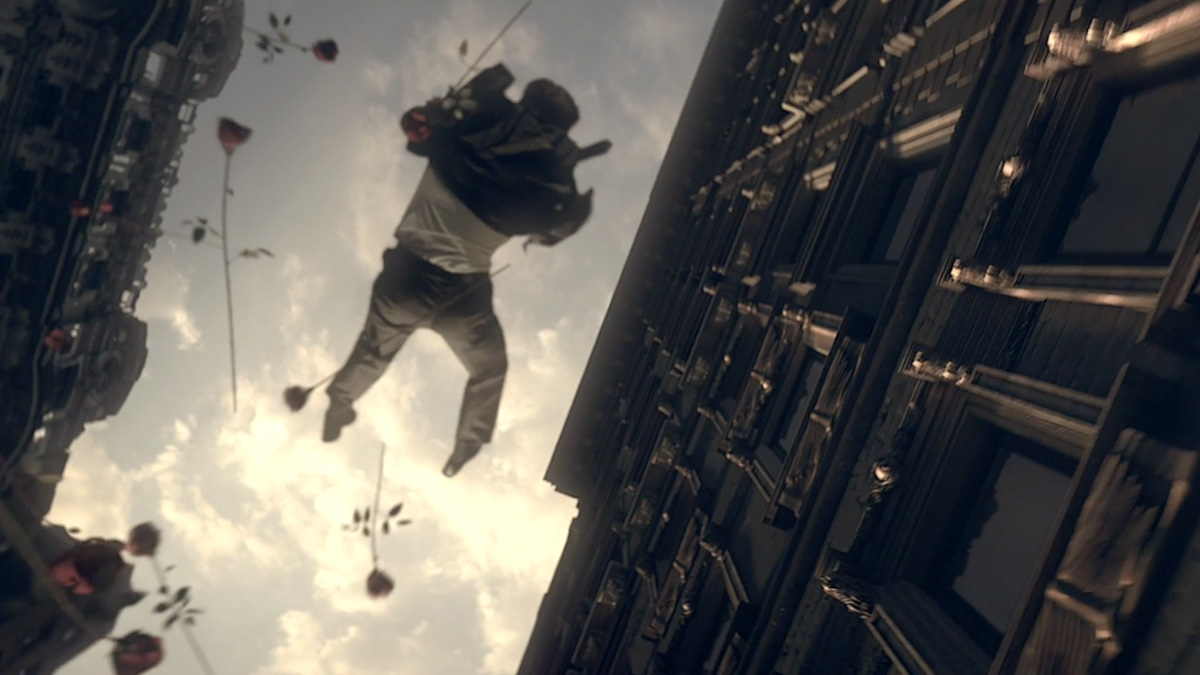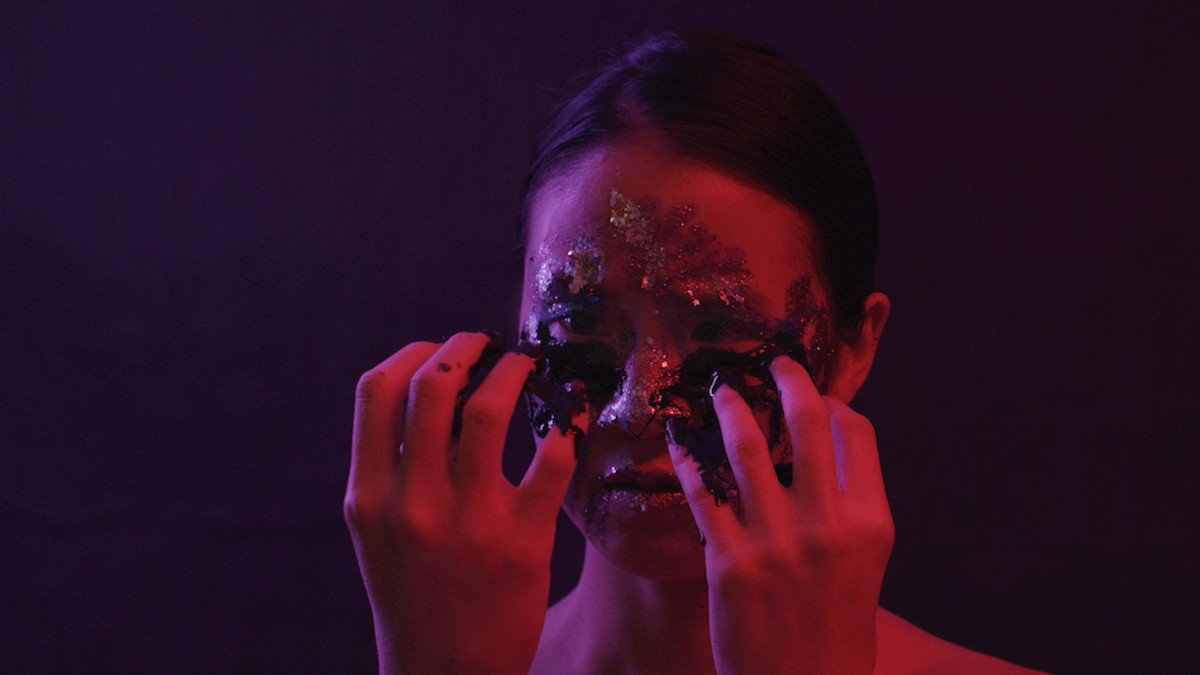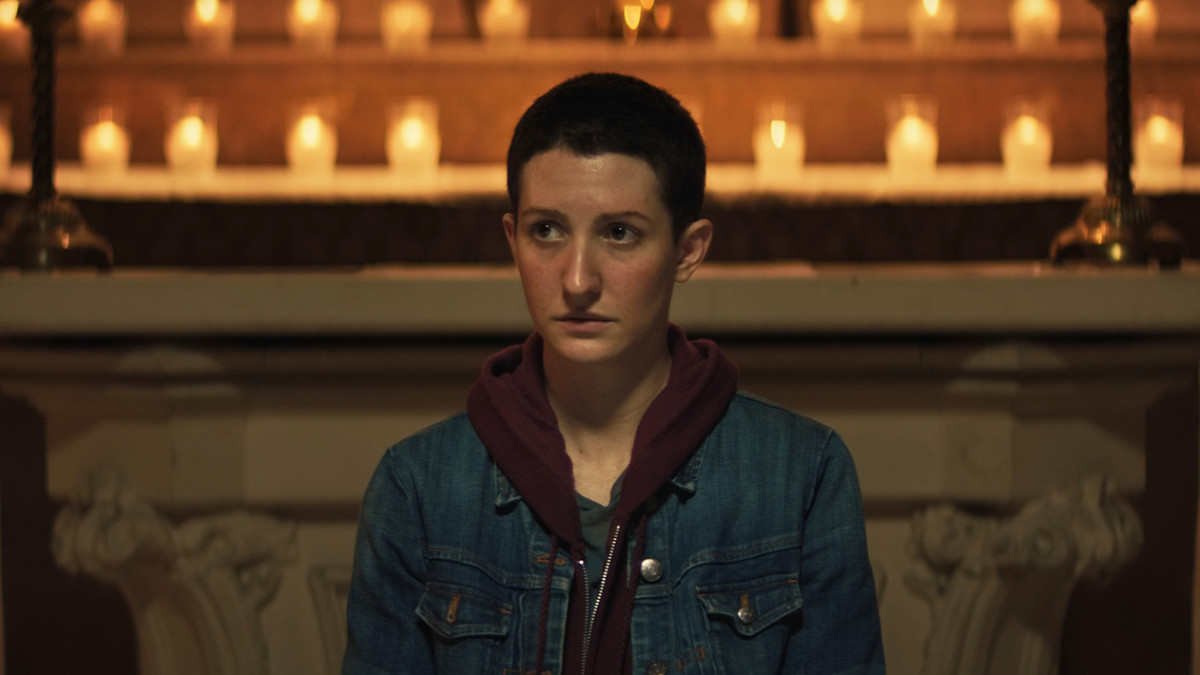With gender and identity in flux, Corey and Mia struggle to redefine their relationship.
‘Valentine’ explores an intimate narrative that many couples go through as one or both are transitioning in gender or sexual identity. Directors Beck Kitsis and Chris McNabb don’t shy away from bringing their own personal experience to the screen, where they wanted to share how shifting identities can affect a romantic relationship and test the strengths of love between two people. The film is beautifully shot in a tender tone, that truly captures the essence of the feelings and emotions shared between this couple. We spoke with the co-writers and co-directors Chris and Beck who gave us some wonderful insight on the story and production:

Can you tell us what inspired you to bring this story to life?
Valentine is extremely personal, as it’s loosely based on our own experiences as a couple. I didn’t admit to myself that I was transgender until I was already years into a long-term relationship with Beck (a cis woman who identified as straight at the time). We’ve been together for eight years now, but that early period of transition was full of uncertainty. As I was beginning the process of rediscovering my identity, Beck was wondering what our relationship meant for her sexual orientation – in and of itself a fundamental part of her own identity. With Valentine, we wanted to make a film that didn’t shy away from the complexities of transitioning within a romantic partnership, but that was handled with compassion and care to reflect our own authentic experience.
How did you go about casting for ‘Valentine’?
In finding our actors, we were fortunate to work with an incredible casting director named Kate Antognini, along with our wonderful producers, Katy Drake Bettner and Zach Fleming. As we embarked on an extensive casting search, we received a remarkable tape from Sadie Scott early on. After virtually auditioning them and then meeting in-person, we knew that they were the right actor for the role of Mia. Not only did Sadie deliver a truly moving performance, but their own personal experience as a nonbinary person also introduced an additional layer of sensitivity to their portrayal of the character of Mia, a cis woman trying to make sense of what their partner is going through and what it means for the future of their relationship.
In searching for Corey, we were adamant about hiring a trans and/or nonbinary actor. In addition, we also needed someone who was comfortable with having and then removing their body hair onscreen. It was through conversations with Scott Turner Schofield at GLAAD that we ultimately found Jacob Tobia. We had read their memoir, Sissy: A Coming-of-Gender Story, so we were already big fans of theirs, and they were actually one of the very first people we thought of for the role. When Scott sent them the script and they were interested, both Beck and I were thrilled. They brought an immense vulnerability and personal understanding to Corey that immediately elevated the character to new heights. Plus, Jacob was such a delight to work with. Despite the serious nature of the material, Jacob always kept the set light and upbeat, which proved extremely important when making a project like this.
Finally, Jacob and Sadie also just had great chemistry together. Within minutes of our first rehearsal, it felt like they’d been friends for years. We are SO grateful for our cast and crew. The film would be nothing without them.

As a writer/director are you open to changes or suggestions when you start shooting or do you like to stick to what has been written?
We very much welcome new ideas and suggestions throughout development, production, and all the way through post. Actors are just as knowledgeable about their characters as writers and directors. Therefore, it’s integral for us to remain open to their feedback on lines, line delivery, wardrobe, etc. That said, we definitely spend a good amount of time in the screenwriting process, so we try to shoot what we have written. Then, we budget time for alt lines and performances.
For Valentine, most of our changes actually ended up occurring in post-production. Once we were in the edit, we discovered a couple of scenes that, while extremely interesting to us, were distracting from the central themes of our story. So, like with most of our films, we re-wrote some of the script in the edit, going from a 16-minute rough cut to a film with a final runtime of just under 10 minutes. Ultimately, we think the cuts and changes we made in the editing room strengthened Valentine.
What was the most challenging scene for you to film?
Definitely the bathroom scenes, just purely because of how tight the spaces were (and unfortunately how loud the floorboards were, too!). Out of necessity, we ended up using two different bathrooms – one specifically for the shower interiors, and one for everything else. This complicated things on a technical level and added more time to our already-packed shoot schedule. Fortunately, thanks to assistant director Isadora Dias Vieira and the camera + G&E team led by cinematographer Adam Kolodny, we were able to quickly and efficiently capture what we needed.

What has this film taught you about filmmaking?
Don’t be afraid to be vulnerable. Audiences can tell when you’re being cagey or inauthentic. The more specific your film is, the more emotionally universal it becomes. Similarly, the more flawed your characters are, the more relatable they probably are, too. Finally, no one in life is perfect; it’s not a character’s purpose or a film’s job to present model behavior.
Do you have any tips or advice to offer fellow filmmakers for making such intimate films?
Hire an intimacy coordinator! We collaborated with an incredible intimacy coordinator named Meleza S Morris. They made the filming process so much easier. We were dealing with a lot of emotionally and physically intimate story beats, so having someone who could act as an advocate for the actors, while honoring the emotional integrity of each scene was crucial. Unfortunately, I think there’s a misconception in some circles that intimacy coordinators might, in some way, inhibit the process of filmmaking, but that couldn’t be further from the truth. In fact, we found that Meleza actually helped us make the physically intimate scenes feel more real. Much like a stunt coordinator, Meleza knew what would read best on camera and was therefore able to help us direct the most natural and convincing performances, while making sure everyone felt safe and supported on set.

What do you hope people will take away from ‘Valentine’?
When Beck and I first began developing Valentine, we always hoped that queer audiences might see themselves and their stories reflected back to them onscreen. However, until we wrote the script and started sharing it with friends, we hadn’t realized that people outside of the queer community might also relate to the film. While Valentine specifically explores gender and identity, it also asks universal questions that we think all couples can relate to like…What do you do when you love someone, but feel like you’re growing in different directions? We never stop growing, but how do we grow together as partners?
Which films can you say directly inspired this film?
In making Valentine, we were inspired by the themes and relationship dynamics of Laurence Anyways and Lingua Franca, the romantic yearning of the characters in Ali: Fear Eats the Soul and All That Heaven Allows, the warm, passionate colors and tactile intimacy of In The Mood For Love, and the music of Call Me By Your Name. We were also inspired by Nan Goldin’s photography (specifically the compositional tension of “Nan and Brian in Bed”), as well as music by Told Slant (who ultimately composed the score for Valentine) and SOPHIE.
What are your favorite short films?
We have too many favorite short films to list them all, but a few that come to mind are Alabama (2000 Light Years), Forever’s Gonna Start Tonight, Fry Day, Her Friend Adam, Lucia Before and After, Night and Fog, Possibly in Michigan, Scorpio Rising, Summer Animals, and Wasp.





